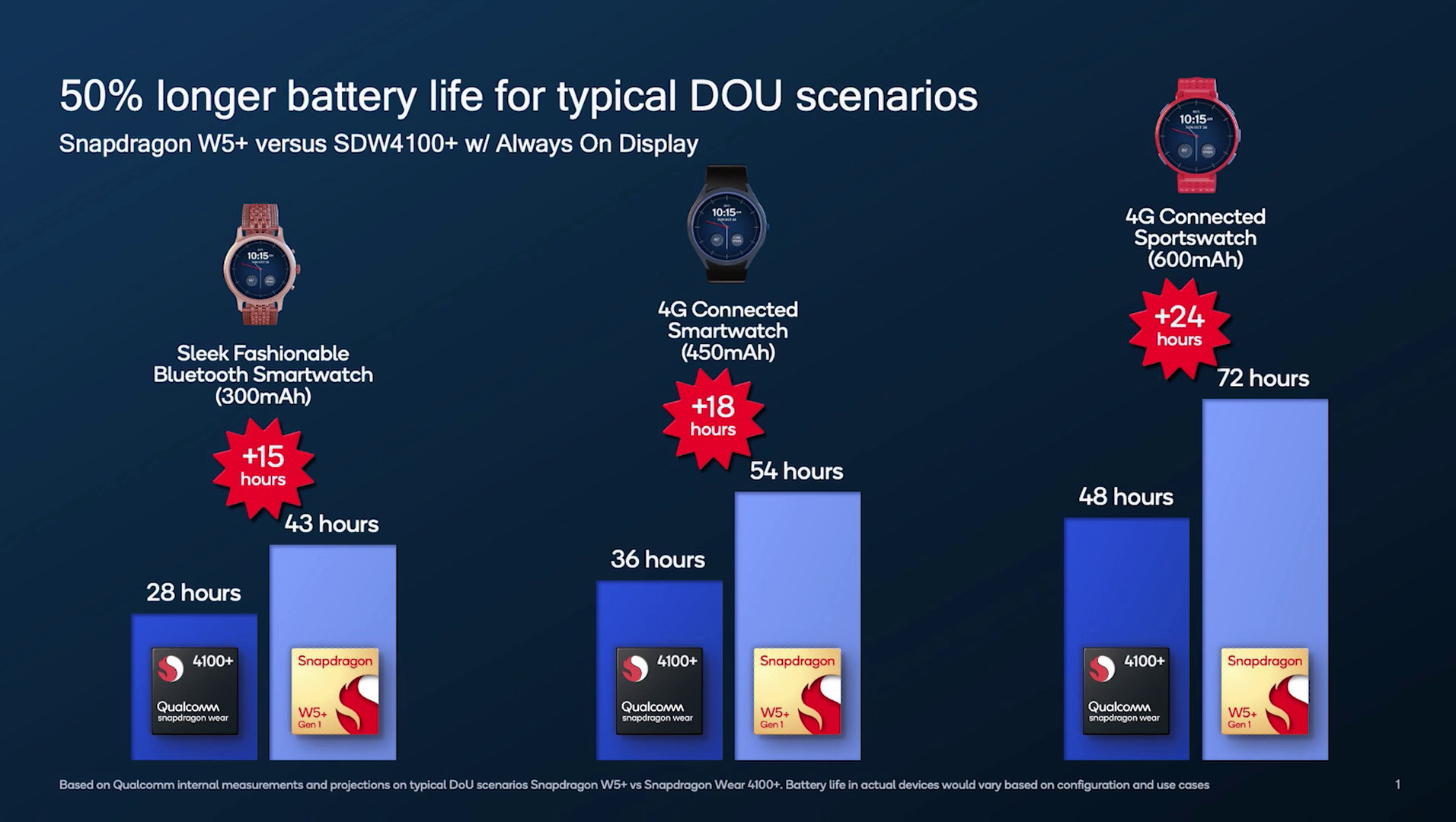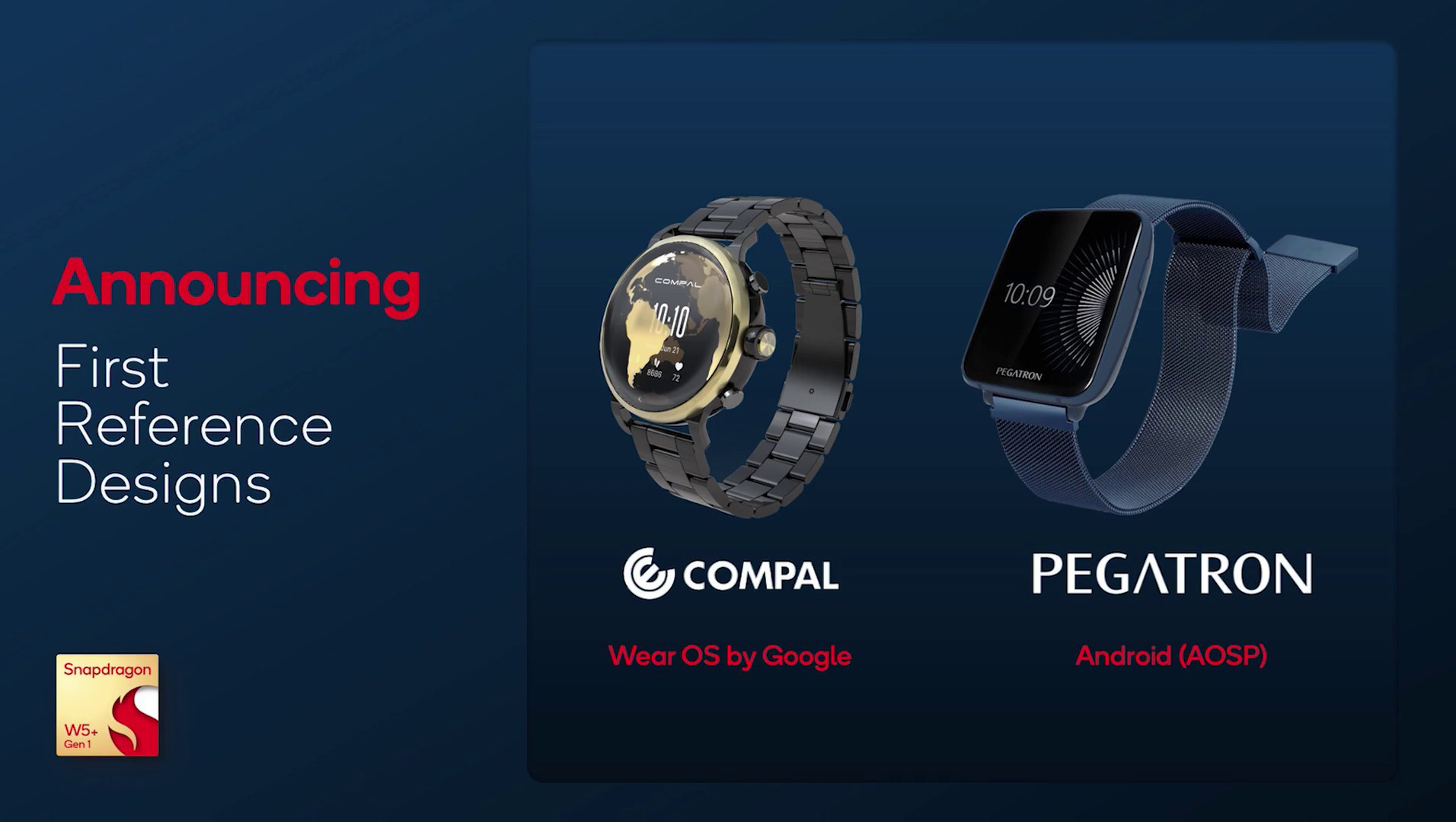The cream of the crop is the Snapdragon W5 Plus Gen 1 platform, which is built on 4nm technology and boasts “ultra-low power”. In fact, Qualcomm claims that it uses a whopping 50% less power than the previous generation Wear 4100+. According to the company, smartwatches last between 15 to 24 hours longer with an Always-On Display when running on the W5 Plus Gen 1 versus when it is fitted with the 4100+. It supports Bluetooth 5.3, NFC, low power states such as Deep Sleep and Hibernate, and has low power islands for Wi-Fi, GNSS, and audio. Qualcomm claims that the new chips can also offer new interactive experiences such as 3D watch faces, 3D maps, video playback, two-way video calling, smart device controls, and more. The W5 Plus Gen 1 also offers twice as much performance while being 30% smaller in size. It uses a hybrid architecture equipped with the 4nm SoC along with an integrated 22nm always-on co-processor. The CPU is equipped with four ARM Cortex A53 cores, the same as the 4100+, and the GPU uses the Qualcomm Adreno A702 clocked at 1Ghz. As for the base Snapdragon W5 Gen 1, Qualcomm has not revealed much about it other than that it won’t have a co-processor unlike its higher-end counterpart. While the Plus variant is meant for mainstream smartwatches, the regular W5 is meant for segment-specific wearables such as those for China, kids, the elderly, health devices, and enterprise devices. Qualcomm revealed that there are already a total of 25 designs in the works, with OPPO and Mobvoi set to be the first manufacturers to feature the new chipsets. Next month, OPPO will launch the Watch 3 equipped with the Snapdragon W5 Gen 1 while Mobvoi will debut the Snapdragon W5 Plus Gen 1 in its upcoming flagship this fall. The company also announced two reference designs from Compal and Pegatron which OEMs can use to develop wearable products using the latest platforms. (Source: Qualcomm [1][2])


